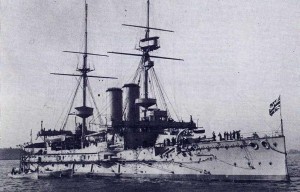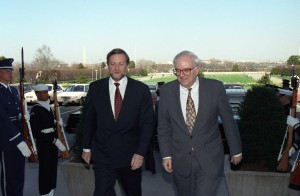This article is special to The Hunt for Strategic September, a week of analysis on the relevance of strategic guidance to today’s maritime strategy(ies).

The U.S. Joint Chiefs of Staff (JCS) Pub 1-02 defines the term “Strategic Concept” as: “The course of action accepted as the result of the estimate of the strategic situation. It is a statement of what is to be done in broad terms sufficiently flexible to permit its use in framing military, diplomatic, economic, information and other measures which stem from it.” The government’s estimate of the strategic situation can be found in the National Intelligence Council publication: Global Trends 2030 Alternative Worlds, December 2012. [1] The course of action is reflected in the President’s 5 January 2013, defense strategy guidance entitled: Sustaining U.S. Global Leadership: Priorities for 21st Century Defense. [2] Known as the DSG, this guidance was intended to serve as the basis for DoD policy and resource decisions based on projected fiscal constraints. However, the DSG did not include the significant additional cuts triggered by the Budget Control Act, e.g. “sequestration.”
The Strategic Choices and Management Review (SCMR), commissioned by the U.S. Secretary of Defense, was designed to produce guidance to the DoD to deal with the sequestration in 2014; formulate budgets for 2015-2019; and, serve as the basis for the upcoming Quadrennial Defense Review (QDR). On 1 Aug 2013 Secretary Hagel announced the findings of the SCMR and laid out two alternative paths. One path would prioritize high-end capabilities over end-strength. The other would keep end-strength but sacrifice modernization and research and development on next-generation systems. In summary, the world situation is well-defined in the DNI’s Global Trends 2030 Alternative Worlds (footnote 1). However, the strategy or course of action for national defense planning and programming is a mess given the certainties (or uncertainties) of fiscal levels resulting from sequestration. For Congress, the question is which comes first: the national defense strategy (the chicken) or the funding levels (the egg)? Clearly the egg is in charge.
The QDR, mandated by Congress, is to be conducted by the DoD every four years to examine force structure, force modernization plans, infrastructure, and budget plans. The QDR is supposed to be a comprehensive effort to prepare a national defense strategy looking forward 20 years. Logic would argue that if the national security threat is well-defined and understood, the strategy for addressing that threat would come first, with fiscal constraints causing adjustments to the strategy in areas of least risk. The threat is projected thru 2030 and available to Congress. The President has issued defense strategy guidance priorities for the 21st century which are available to Congress. So, why does Congress require a QDR that, in effect, duplicates the executive branch processes? Surely the congress understands that the DoD QDR has to be consistent with the President’s defense strategy guidance and consistent with the President’s budget submissions for DoD.
As presently defined, the QDR requires a substantial effort, delivers little value, and should be terminated.




